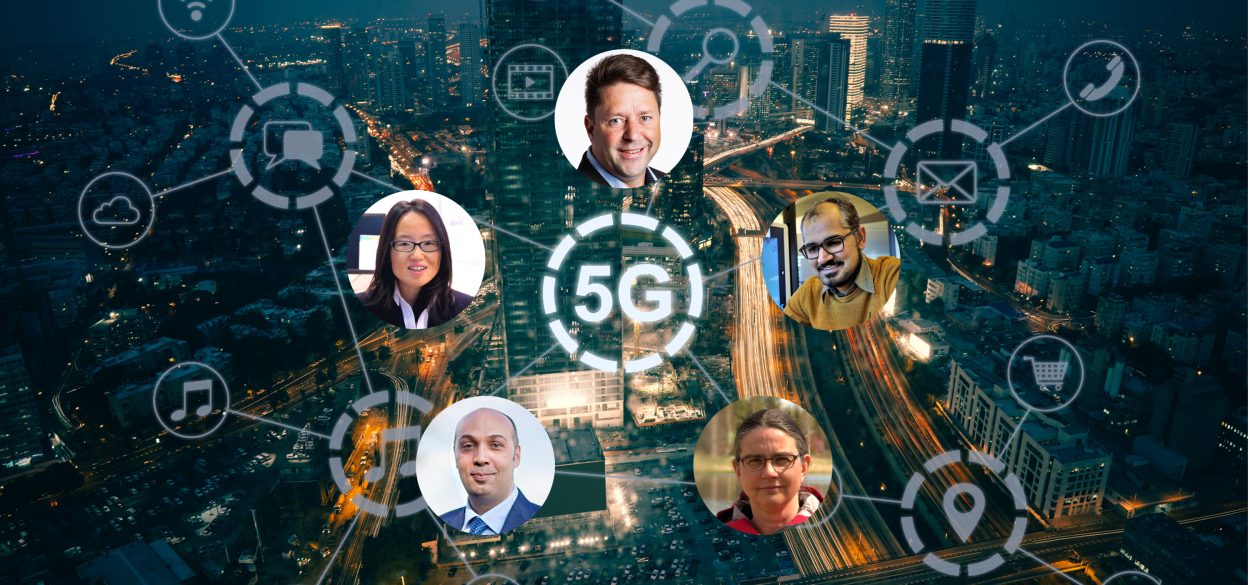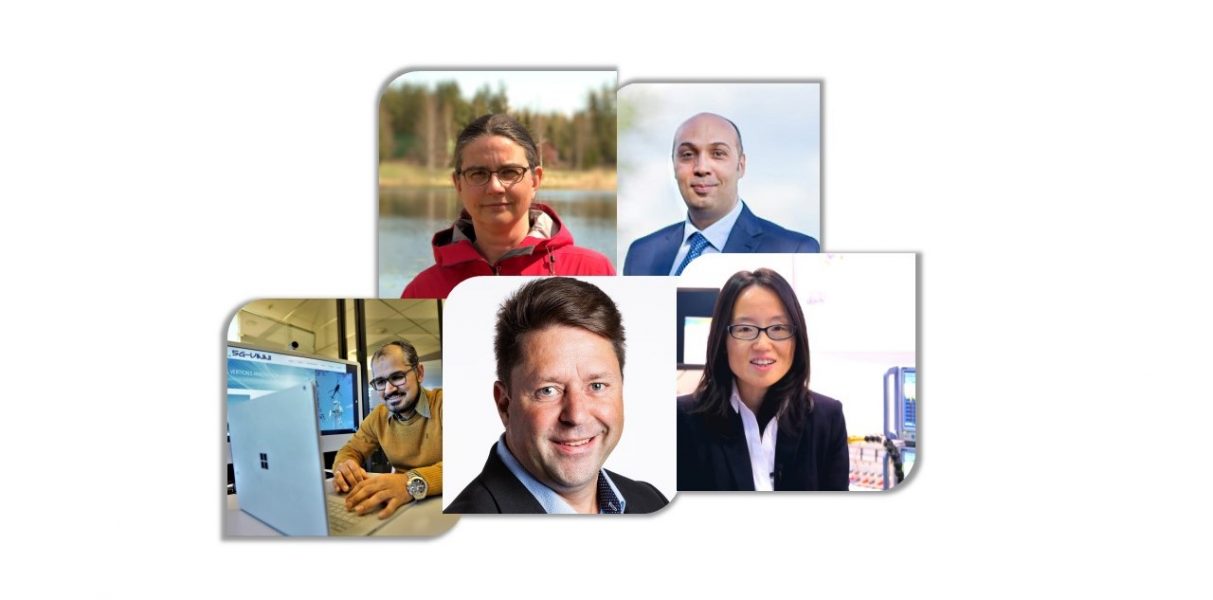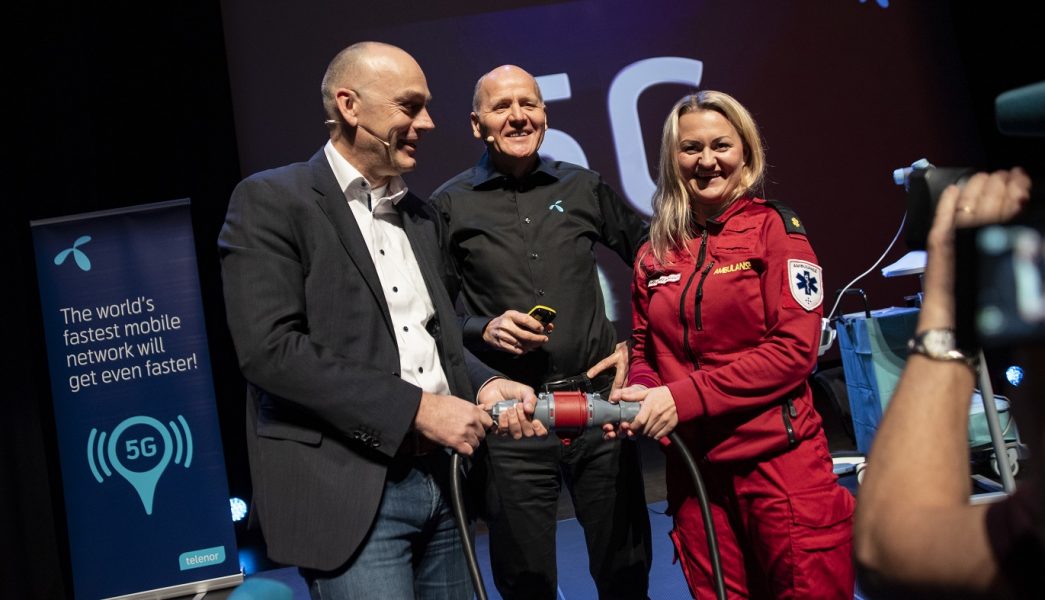
Those in the know share the changes, challenges, and opportunities we can expect from 5G.
The digitalisation of society is driven by a number of components, like IoT, AI, and cloud computing. Few if any technologies, though, are likely to have a greater impact in the coming years than 5G. To find out what the 5G future holds in tangible terms, we asked five different experts for their honest perspectives.

What is one major change you think 5G will have on society or industries?
Dr. Silke Holtmanns, Head of 5G Security Research at Adaptive Mobile Security:
“5G connectivity will allow dynamic changes in processes. From large ransomware attacks and the current work-from-home wave, we see that being able to react fast and adjust quickly to changing situations is important, both individually and as a company, to keep things running properly.”
Dr. Yue Wang, Senior Technology Manager, Network AI, Samsung UK:
“The revolutionising of the production of future services and products. For example, through the analytics of big data, the combination of 5G and AI could transform how the industry operates, and potentially significantly boost productivity in smart factories.”
Dr. Alain Mourad, Director of Engineering R&D at InterDigital Labs, UK:
“5G has already positively shaken up the spectrum allocation framework, when dedicated spectrum licenses have been allocated in different countries directly to the vertical industries (e.g. factories). This trend is set to continue and promises to drive more competition but also collaboration with the MNOs, which will only benefit the society and industries at large.”
Dr. Kashif Mahmood, Senior Research Scientist, Telenor Research:
“The 5G paradigm shift is about “empowering the verticals” such as railways, fish farms, public safety, Health sector, Industry 4.0, media and entertainment.”
Professor Matti Latva-aho, Oulu University, Finland:
“Once 5G is widely deployed, we’ll be in the middle of the 4th industrial revolution. Utilization of edge intelligence and context awareness will open up a new set of applications and services we’ve never dreamed of.”

Also read: How about a slice of 5G to boost your business?
What’s one of the biggest challenges with 5G now, and what can we do about it?
Dr. Silke Holtmanns:
“Opening up the network and connecting entire societies bring a large responsibility for network operators to protect against fraud, spam, nation-state attacks, etc. Therefore, deep analysis of threats is important.”
Dr. Yue Wang:
“Transformation of networks is needed to adapt to the diversified requirements of future business and services supported by 5G, and intelligent network operation and management will become increasingly important for operators to tackle challenges in their current and future networks.”
Dr. Alain Mourad:
“To demonstrate the MNOs’ revenue growth opportunities it promised, especially in vertical industries. This is important to provide critical assessment of where the 5G commercial opportunities really lie, now that we know what the technology is capable of offering in real-life.”
Dr. Kashif Mahmood:
“Efficient onboarding of vertical industry use-cases is one of the biggest challenges in 5G. In order to address this challenge, we need to co-create the use-cases with the verticals from the very beginning.”
Professor Matti Latva-aho:
“New opportunities lie in ecosystems and value chains driven by the needs of different verticals. Current regulation policies and business models do not support them well. This may significantly slow down digitalisation of society.”

Another 5G read for you: 5G is here: ‘Slow’ Trønders become the fastest of all Norwegians
Which 5G future scenario are you most excited about?
Dr. Silke Holtmanns:
“I would love to see better teleworking meetings supported by 5G. Cameras and voices are ok, but we are not capturing the body language and the vibes of a person yet. Holographic meetings would be awesome, as I’ve always been a big fan of the “Holodeck” idea.”
Dr. Yue Wang:
“Fast and reliable communication provided by 5G can facilitate real-time transmission of large medical image files, such as remote ultrasound, and help doctors to perform remote inspections effectively. Imagine when telemedicine can make healthcare easily accessible to every person at every place.”
Dr. Alain Mourad:
“Two key scenarios really. One on extreme reality and immersive multimedia including gaming, and another more towards smart factories.”
Dr. Kashif Mahmood:
“All those scenarios that will empower the verticals. For instance, providing secure, reliable, and low latency communication networks for mobile railway communication systems, ultra-high uplink speeds for video upload from fish farms, and reliable communication for the health sector in particular to monitor elderly homes.”
Professor Matti Latva-aho:
“There are many reasons to be enthusiastic about the 5G future, and I, for one, are really looking forward to seeing the holographic and other new displays coming up!”’